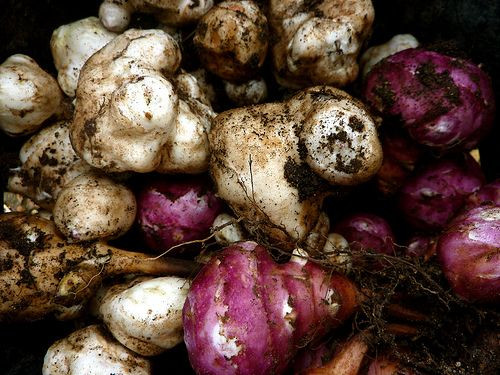Can You Eat Soil? Chef Toshio Tanabe Makes Regular Use Of Earthy Ingredient, Calls It ‘Natural And Nutritious’

The practice is most common among sub-Saharan African Tribes and curious children, but add to the list of dirt-eaters Tokyo chef Toshio Tanabe and the patrons of his restaurant, as Tanabe serves soil-inspired dishes at the pinnacle of delicacy.
It’s called geophagy, and eating dirt or other soil-like substances, such as clay or chalk, has been in practice for thousands of years. Some experts even believe the earth substances confer a whole host of health benefits for pregnant women and other people in developing worlds who are nutrient-deficient.
"It's about women lacking nutrients or women in impoverished conditions who don't have access to health care, adapting," anthropologist Erica Gibson-Staneland told ABC News. She highlighted that many women African women must rely on other sources of minerals when dairy-based calcium is unavailable. “In Africa, they eat the dirt from termite mounds.”
As for Tanabe, his process is slightly more refined. He relayed the process in an interview with Modern Farmer:
“First, I place it in the oven on a flat tray and heat to 200 Celsius [392 Fahrenheit] for five minutes, three times. The bacteria is killed at around 121 Celsius [250 Fahrenheit]. I then put it in a pot of water and boil it for 30 minutes. Next, I drain it to get rid of sand and particles, before straining it through a fine cheesecloth. I let it sit, and it separates into soil and water. I use the liquid for jellies and sauces.”
Tanabe uses either black or white soil depending on the dish he’s constructing. Each month, he says he buys 20 kilograms worth (44 lbs.) from a soil supplier two hours away in Japan’s Tochigi Prefecture. He extracts the soil from 10 miles beneath the earth’s surface to ensure its purity, before exposing the soil to additional tests for pollution, contamination, and lead.
“Soil is a pure living thing,” he says, “a collection of microorganisms. Anything bad about it, pollution or radiation contamination, is generally caused by humans.”
Tanabe’s folkloric sentiments have deeper scientific roots, in fact. Studies performed by Cornell researcher Sera Young and her colleagues in 2011 analyzed reports from missionaries, plantation doctors, explorers, and anthropologists to put together a database of more than 480 cultural accounts of geophagy. The practice appeared most often among pregnant women and children, two groups that were likely using the earth for survival, the team reasoned.
Nutrition was not the key motivator found during the study. If anything, the clay that had been ingested was binding to the nutrients inside people’s stomachs, making it harder to digest. That would imply poor nutrition wasn’t a cause for geophagy, but rather, the other way around.
More likely was geophagy as a means to protect oneself from harmful pathogens and parasites, which can affect pregnant women and children more easily than other groups. The team’s database showed dirt was most often consumed during bouts of gastrointestinal stress; however, it’s unlikely the dirt is what caused the stress, they argued, because it was coming from deep in the ground (though perhaps not as deep as Tanebe’s soil), where pathogens are less likely to contaminate it.
"We hope this paper stimulates [more] research," Young and her colleagues wrote. "More importantly, we hope readers agree that it is time to stop regarding geophagy as a bizarre, non-adaptive gustatory mistake."
Tanabe, for his part, wishes the same about his business, which must also see past nutrition in order to make money. When asked how the soil tastes, Tanabe says most customers report an “earthy” quality, though the chef disagrees, arguing instead that it tastes — perplexingly — “actually like the Earth itself.”
“I always feel good after eating it,” he said. And while the good feelings may be a placebo, according to Young’s research, a good feeling is a good feeling, with or without a scientific basis. “Today our brains have been programmed to think that soil is dirty, but that’s not true,” he added. “Soil is natural and nutritious.”



























